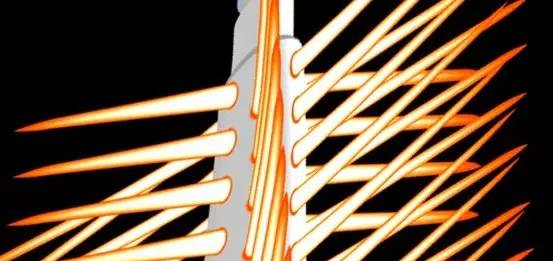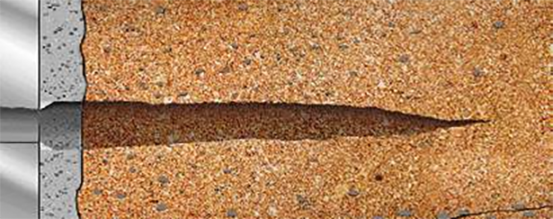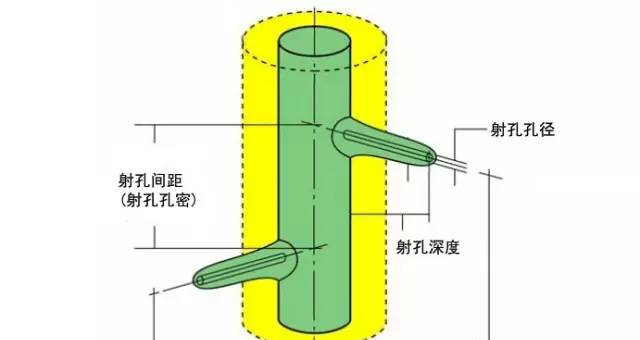1.Perforation density
Is the number of perforations per meter of length. Under normal circumstances, to obtain the maximum production capacity requires a higher perforation density, but in the selection of perforation density, can not be unlimited to increase the density, should consider the following factors:
Too large hole density can easily cause casing damage.
The hole density is too large, the cost is high;
Excessive hole density will complicate future operations.
When the pore density is very small, the increase of productivity is obvious when the pore density is increased. But when the hole density increases to a certain value, the effect of hole density on productivity ratio is not obvious. Experience shows that when the hole density is 26~39 holes/m, the production capacity will be maximized at the lowest cost.

2. Hole diameter
Is an important parameter indicating the size of the perforation. The perforation size is usually in the range of 5 to 31mm (0.2 to 1.23in), depending on the type of perforation and the amount of charge. With the same amount of ammunition, the perforation aperture of deep-penetrating perforation is smaller, and that of large-aperture perforation is larger. The larger the amount of ammunition, the larger the perforation aperture.
Another factor that affects the aperture is the clearance between the perforating gun and the casing. The perforating effect is best when the perforating gun is in the center of the wellbore. In the perforating operation, it is necessary to take appropriate measures to keep the perforating gun in the center of the wellbore.

3. Phase
The Angle between two adjacent perforations is called the phase Angle. Phase also has a great effect on productivity. At present, there are six commonly used perforating phases of 0°, 45°, 60°, 90°, 120° and 180°. In anisotropic formation, the productivity increases greatly when the phase Angle changes from 180° to 0° or 90°, but the productivity does not change much when the phase Angle changes between 0° and 90°.
A large number of experiments and field applications show that the oil well has the lowest productivity when the hole phase is 0°. When the phase is 120° and 180°, the production capacity is in the middle; Slightly higher at 45° phase; When the phase is 60° and 90°, the production capacity is the highest
4. Perforation penetration depth
Refers to the length of the perforation channel. The perforation penetration depth is determined by the type of perforation charge structure and the amount of ammunition. Deep penetration type large charge charge, the penetration depth is long, the penetration depth is generally in the range of 146~813mm, and the penetration depth increases with the increase of ammunition. The productivity ratio of oil Wells increases with the increase of perforation depth, but the trend of productivity ratio increases gradually, that is, when the hole depth increases to a certain value, the productivity ratio will not increase too much.

Post time: Sep-12-2023








 Room 703 Building B, Greenland center, Hi-tech development zone Xi’an, China
Room 703 Building B, Greenland center, Hi-tech development zone Xi’an, China
 86-13609153141
86-13609153141


